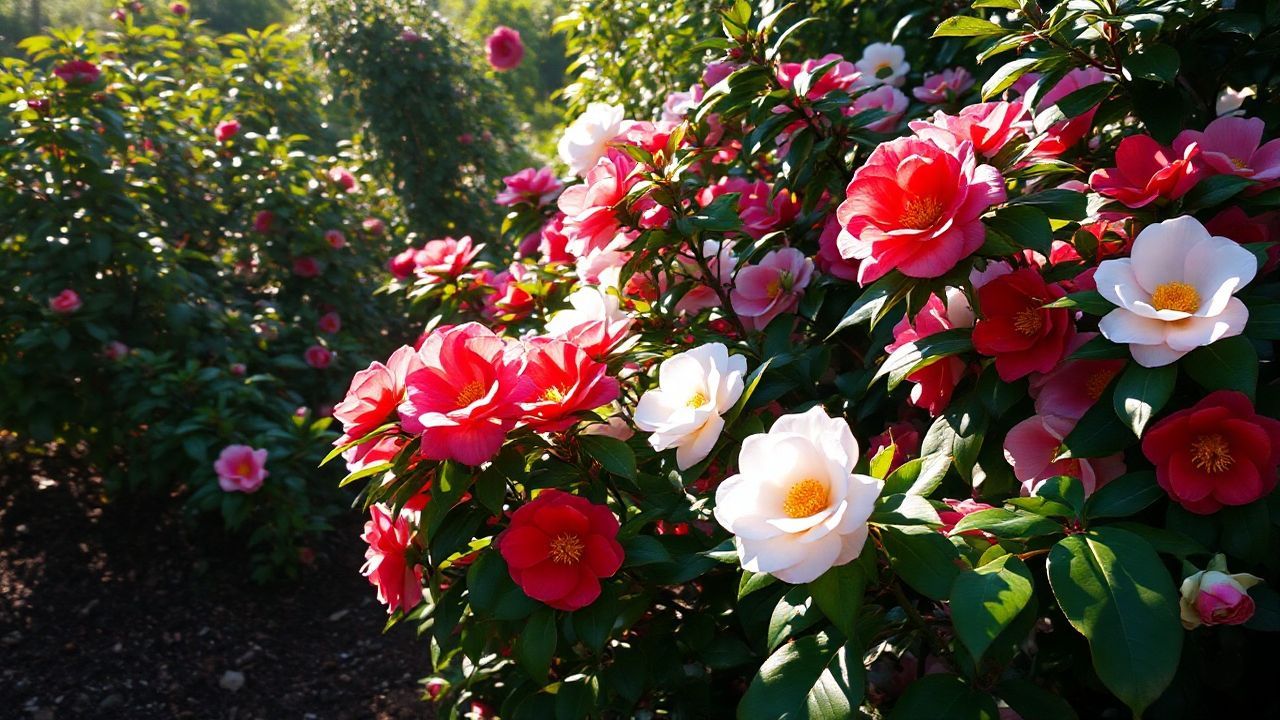Introduction to camellias
Camellias, with their captivating beauty and timeless elegance, have captivated the hearts of gardeners and flower enthusiasts for centuries. Native to the temperate forests of East Asia, these evergreen shrubs grace gardens worldwide with their stunning blooms that range from delicate pastels to vibrant hues. Their exquisite petals, often adorned with intricate patterns or ruffled edges, create an unparalleled visual feast that heralds the arrival of spring.
As the days grow longer and temperatures rise, camellias awaken from their winter slumber, their buds swelling with anticipation. One by one, they unfurl, revealing a profusion of blooms that dance in the gentle breeze. From the classic single-petal forms to the sumptuous doubles with layers of velvety petals, each cultivar offers a unique charm that adds a touch of enchantment to the garden.
The foliage of camellias is equally captivating, with glossy, deep green leaves that provide a striking contrast to the delicate blooms. Their enduring nature makes them an excellent choice for year-round interest, adding a touch of verdant beauty to the landscape even when not in flower.
Camellias are not only a feast for the eyes but also possess a captivating fragrance that adds an aromatic dimension to the garden. The delicate scent of some varieties evokes the alluring aroma of tea rose, while others exude a citrusy fragrance that invigorates the senses.
Whether planted as stand-alone specimens, part of a hedge, or used in woodland gardens, camellias are versatile plants that bring a touch of elegance and beauty to any setting. Their adaptability to various soil conditions and sun exposure levels makes them a welcome addition to both novice and experienced gardeners alike.
Varieties of camellias
Blooming times by variety and region
The earliest blooming camellias are typically the sasanqua varieties, which are native to Japan and Korea. Sasanquas typically bloom in the fall, with some varieties producing blooms as early as September.
The next earliest blooming camellias are the japonica varieties, which are native to China and Japan. Japonica camellias typically bloom in the winter, with some varieties blooming as early as November and others as late as March.
The latest blooming camellias are the reticulata varieties, which are native to China and Myanmar. Reticulata camellias typically bloom in the spring, with some varieties blooming as late as May.
The blooming time of camellias can also be affected by the climate in which they are grown. Camellias that are grown in warm, humid climates will typically bloom earlier than camellias that are grown in cold, dry climates.
If you are planning to grow camellias in your garden, it is important to choose a variety that is appropriate for your climate. You should also consider the blooming time of the variety when selecting a planting location. By following these tips, you can ensure that you will enjoy the beautiful blooms of camellias for many years to come.
Caring for camellias during blooming
Conclusion: Enjoy camellia blooms year-round
To extend the blooming season, consider planting a variety of camellia species. Each species has its own unique bloom time, so by planting a mix of species, you can ensure that you have camellias in bloom for months on end. For example, Camellia sasanqua begins blooming in the fall and continues until the first hard frost. Camellia japonica, the most popular species, starts blooming in mid-winter and continues until late spring. Camellia reticulata, with its large, showy flowers, blooms from late winter to early spring.
In addition to planting a variety of species, you can also extend the blooming season by providing your camellias with the right growing conditions. Camellias prefer acidic, well-drained soil. They also need partial shade to full shade, especially in hot climates. And while camellias are relatively drought-tolerant, they will bloom best if they are watered regularly during the growing season.
With proper care and planning, you can enjoy camellia blooms year-round. These beautiful, versatile shrubs are a welcome addition to any garden.

Leave a Reply